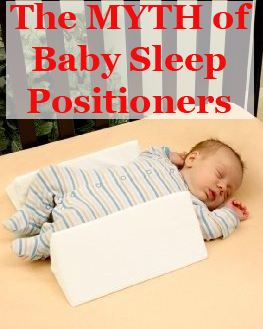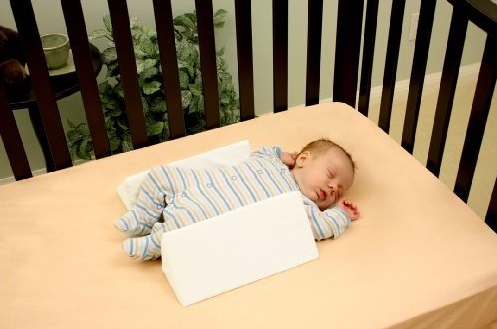 Having a newborn changes your life in numerous ways, one of which is that you worry a lot more. You worry about putting your baby down for naps or to sleep for the night. Will he or she be safe? We’re all terrified of SIDS. Naturally, we’re intrigued by any products claiming to prevent it.
Having a newborn changes your life in numerous ways, one of which is that you worry a lot more. You worry about putting your baby down for naps or to sleep for the night. Will he or she be safe? We’re all terrified of SIDS. Naturally, we’re intrigued by any products claiming to prevent it.
There are many legitimate strategies for reducing the risk of SIDS; the Back to Sleep campaign has reduced the rate significantly. Yes, most of us were put to sleep on our bellies as infants, and we turned out just fine. But there is concrete evidence that putting your baby on his or her back to sleep is safer. Maybe it’s just 0.01% safer, but it is safer.
Updated Baby Sleep Safety Guidelines
The American Academy of Pediatricians recently published their updated sleep safety guidelines for infants. Every recommendation is supported by scientific evidence. Pacifiers, for example, are recommended because they have slight protective effect. Ironically, the pediatricians recommend against any product that claims to reduce the risk of SIDS. They specifically mention baby sleep positioners as something that purports to make sleep safer for your baby but has not been proven to do so:
“Avoid commercial devices marketed to reduce the risk of SIDS—These devices include wedges, positioners, special mattresses, and special sleep surfaces. There is no evidence that these devices reduce the risk of SIDS or suffocation or that they are safe.” Pediatrics 2011;128:1030–1039
What’s Wrong with Sleep Positioners?
 How can this be? How is it safe to put your baby to sleep on his or her back, but not to use a device designed to keep them in that position? The simple answer is this: the only thing that should be in the crib is the baby. A positioner might help keep your baby on his or her back, or it might not. But the moment your baby gets out of it, that thing is a hazard just like any loose bedding, pillows, or other objects. And you know the dangers of those:
How can this be? How is it safe to put your baby to sleep on his or her back, but not to use a device designed to keep them in that position? The simple answer is this: the only thing that should be in the crib is the baby. A positioner might help keep your baby on his or her back, or it might not. But the moment your baby gets out of it, that thing is a hazard just like any loose bedding, pillows, or other objects. And you know the dangers of those:
Keep soft objects and loose bedding out of the crib to reduce the risk of SIDS, suffocation, entrapment, and strangulation. Pediatrics 2011;128:1030–1039
There’s no evidence supporting a safety benefit for sleep positioners, so there’s no reason to have one in your child’s bed. If you’re that worried about your baby at night, invest in a baby sleep movement monitor that alerts you of any irregularity in your infant’s breathing. You can also get a mini crib or bassinet and let him or her sleep next to your bed.
One Baby Positioner We Endorse
There is one baby positioner that I do use, because it’s handy and because we received it from the Newborn Intensive Care Unit (NICU) at the hospital. I’m talking about the Boppy Noggin Nest, which supports your baby’s head when he or she is laying on a hard surface. It’s not for sleeping unless you’re there to monitor your baby. However, the Noggin Nest is especially useful on the diaper changer, because:
- It keeps your baby “in position” and keeps him or her comfortable.
- It helps prevent “flat head” issues that can arise from always having your baby laying in the same position.
- It’s machine washable
- It’s cute, especially in pink!
We actually got two of these, that way one can be in the laundry and the other can be in use. Get it here for $14.99 with free returns!
